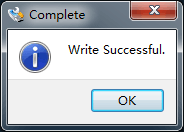Difference between revisions of "Template:BurnOS-Allwinner"
From FriendlyELEC WiKi
(updated by API) |
(updated by API) |
||
| (One intermediate revision by the same user not shown) | |||
| Line 1: | Line 1: | ||
{{#switch: {{{1}}} | {{#switch: {{{1}}} | ||
| − | | NanoPi-R1 | + | | NanoPi-R1 |
| − | | NanoPi-M1-Plus | + | | NanoPi-M1-Plus |
| − | | NanoPi-M1 | + | | NanoPi-M1 |
| − | | NanoPi-NEO | + | | NanoPi-NEO |
| − | | NanoPi-NEO-Core | + | | NanoPi-NEO-Core |
| − | | NanoPi-NEO- | + | | NanoPi-NEO-Ai |
| − | | NanoPi-Duo2 | + | | NanoPi-Duo2 |
| − | | NanoPi-Duo = {{BurnLinuxToSD-Allwinner| | + | | NanoPi-Duo = |
| − | | NanoPi-NEO2 | + | | ZeroPi = |
| − | | NanoPi-NEO-Core2 | + | {{BurnLinuxToSD-Allwinner|{{{1}}}|h3}} |
| − | | NanoPi-NEO-Plus2 | + | | NanoPi-NEO2 |
| − | | NanoPi-K1-Plus = {{BurnLinuxToSD-Allwinner| | + | | NanoPi-NEO-Core2 |
| + | | NanoPi-NEO-Plus2 | ||
| + | | NanoPi-NEO2-Black | ||
| + | | NanoPi-K1-Plus = | ||
| + | {{BurnLinuxToSD-Allwinner|{{{1}}}|h5}} | ||
| #default = {{BurnLinuxToSD-Allwinner}}; | | #default = {{BurnLinuxToSD-Allwinner}}; | ||
}} | }} | ||
| + | |||
{{#switch: {{{1}}} | {{#switch: {{{1}}} | ||
| NanoPi-R1 = {{BurnLinuxToEMMC-Allwinner|NanoPi-R1|h3}} | | NanoPi-R1 = {{BurnLinuxToEMMC-Allwinner|NanoPi-R1|h3}} | ||
| Line 22: | Line 27: | ||
| NanoPi-NEO-Plus2 = {{BurnLinuxToEMMC-Allwinner|NanoPi-NEO-Plus2|h5}} | | NanoPi-NEO-Plus2 = {{BurnLinuxToEMMC-Allwinner|NanoPi-NEO-Plus2|h5}} | ||
| NanoPi-K1-Plus = {{BurnLinuxToEMMC-Allwinner|NanoPi-K1-Plus|h5}} | | NanoPi-K1-Plus = {{BurnLinuxToEMMC-Allwinner|NanoPi-K1-Plus|h5}} | ||
| + | | NanoPi-NEO2-Black = {{BurnLinuxToEMMC-Allwinner|NanoPi-NEO2-Black|h5}} | ||
| #default = <!--no eMMC-->; | | #default = <!--no eMMC-->; | ||
}} | }} | ||
Latest revision as of 10:20, 17 October 2019
1 Linux
1.1 Flash to TF
- FriendlyCore / Debian / Ubuntu / OpenWrt / DietPi are all based on a same Linux distribution and their installation methods are the same.
- Extract the Linux image and win32diskimager.rar files. Insert a TF card(at least 8G) into a Windows PC and run the win32diskimager utility as administrator. On the utility's main window select your TF card's drive, the wanted image file and click on "write" to start flashing the TF card.
After it is installed you will see the following window:

- Insert this card into your board's BOOT slot and power on (with a 5V/2A power source). If the PWR LED is on and the STAT LED is blinking this indicates your board has successfully booted.
;